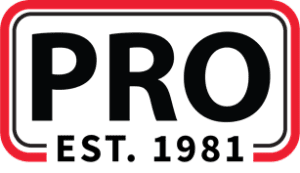It may seem hard to imagine, but 30 years ago, construction safety equipment like debris netting wasn’t widely used in construction. In fact, it wasn’t until 1994 that OSHA began requiring construction companies to provide netting to keep workers and civilians safer.
What Is Debris Netting?
During construction, debris netting is used as a barrier to prevent tools, equipment, and other material from falling. The netting is knitted out of HDPE (high-density polyethylene) material.
Debris netting can be installed in many places on the job site, like in elevators and floor openings. It has saved countless lives.
| Debris Netting Prevents a Disaster
In the early 2000s in Charleston, SC, a piece of tower wall broke away from a bridge under construction. Netting caught the 4 tons of material and allowed five workers to escape certain death. |
Benefits of Construction Debris Netting
Debris netting has features that make it indispensable for the all-weather, rough environment of a construction jobsite:
- It doesn’t unravel when you cut it
- It is rip-resistant
- Its woven structure lets air pass through
- It remains flexible in cold weather
Besides its role in construction safety, debris netting is effective as privacy or shade screening. It can also serve as a windscreen.
Why and Where to Use Debris Netting
Even the smallest dropped object can be fatal if it falls from high enough. Netting protects tools or material from being pushed over the edge and hitting people or structures below. This can reduce serious injury or loss of life or damage to buildings, tools, and equipment.
When it comes to construction, one typically thinks of new buildings. But debris netting is crucial for demolition projects as well as renovation jobs. You can install it vertically or horizontally:
- Around multi-story buildings
- Around scaffolds
- Over floor openings
- Inside elevators
Some debris netting is brightly colored, so it also serves as a visual barrier to alert workers that an opening or edge is nearby.
What to Look for in Construction Debris Netting
The size of the knitted holes on the netting indicates its strength. Premium netting holes are about 1/32”, while standard quality holes are 1/16”.
| Important!
Although premium debris netting is strong, it is not intended to protect workers from falling. For that function, look for personnel safety netting and safety nets. |
High-quality netting includes UV protection to prevent it from degrading due to sun exposure. If your project includes welding or other areas where sparks will fly, look for netting that is rated to be flame retardant.
Purchase the highest quality debris netting you can afford. When you install, store, and care for debris netting properly, it can be reused year after year. Just remember to always inspect used netting before you install it!
Debris Netting Widths and Lengths
Debris netting is available in widths as small as 8.6 inches or as large as 20 feet. However, it’s more common to see widths that range from 8-feet to 12-feet wide.
Since debris netting is used in large quantities, it’s stored on rolls from 150- to 300-feet long. If necessary, you can order rolls by the pallet.
Debris Netting Is a Life Saver
OSHA considers being struck by falling objects one of the “Fatal Four” hazards because getting hit in this manner often results in either serious head injury or death. Even if debris netting wasn’t required on the jobsite, it would still be one of the most important materials to have (along with these construction safety items).
Pro Tool and Supply has a staff knowledgeable on a wide variety of safety topics. We’d be happy to advise you on the most appropriate debris netting for your project! Give us a call at 1-857-706-2980 or contact us online.



